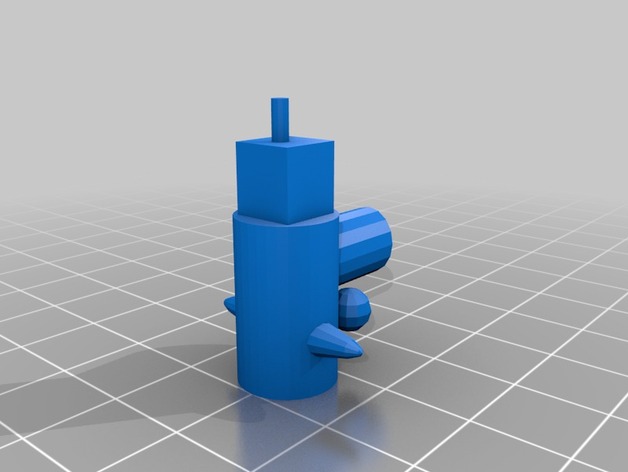
The Serpent Slayer and 3D Printing
thingiverse
This project empowers students to showcase their imagination and creativity involving villains and monsters in fairy tales and fantasy stories by designing their own serpent-like antagonists based on the stories they have read in The Serpent Slayer. Print Settings Printer Brand: MakerBot Printer: MakerBot Replicator 2 Rafts: Yes Supports: Yes Custom Section Project Guidelines Overview and Background Students will design their own serpent-like antagonists based on the stories they have read in The Serpent Slayer. They will learn what makes a villain truly scary or worth worrying about, why larger creatures are often the villains of folktales, and how an artist's interpretation can enhance or detract from an author's story. Objectives Students will design and create their own serpent-like antagonists. Students will understand the basics of 3D printing, design, and tolerance. Audiences Elementary students in grades 4 and 5. This lesson is focused on a specific book – The Serpent Slayer, but its core objectives can be applied to most stories with a larger-than-life antagonist. Subjects This lesson ties into Reading / Language Arts, technology, and art. Skills Learned CCSS.ELA-LITERACY.W.4.3 - Write narratives to develop real or imagined experiences or events using effective technique, descriptive details, and clear event sequences. CCSS.ELA-LITERACY.W.4.3.B - Use dialogue and description to develop experiences and events or show the responses of characters to situations. Lesson/Activity Breakdown Make sure TinkerCad is available on a set of computers reserved before the lesson. Introduce the lesson after reading a story or two, including The Serpent Slayer. Review the schema and information gathered about monsters and villains in folktales. Their size, demeanor, shape, attitudes, and anything else that can be gleaned from their appearances as well as actions. Introduce the project and its parameters. Each student will be given a few templates; everyone will start with the same basic building blocks. Over the next few days, students will design their villains piece by piece based on previous designs. Introduce/review the tools needed to create the villains students planned out. Students will complete the heads portion, save them to their computers, and email them to their teacher. The teacher will begin printing them after class, hopefully in time for the next lesson. After looking at their headpieces, students can notice any mistakes or things they would like to do differently. Afterwards, students can begin designing the body portion. Upon completion of the body, they will repeat the process to deliver their designs to their teachers. The teacher will begin printing them out as illustrated previously. Students will begin designing the feet/extremities of their villains. After sending them to the teacher, students can begin brainstorming their stories. As a class, go over what a story needs. SWBS – Somebody (protagonist) Wanted (goal) But (conflict) So (resolution). While everything is being printed or fixed, students will begin writing their stories on their computers using Microsoft Word. When students have completed their first drafts, they will buddy-edit before starting on their second draft. After a second draft and a second revision, students can begin their final draft. When students complete their stories, the class will reassemble to review or introduce tolerance and assembly. Upon completion of the assignment, students should have their own folktale and a villain to go with it. Duration This lesson could take as little as one week if everything were streamlined, but it could also be stretched out over an entire unit of short stories or folk and fairy tales. Preparation Students should be able to identify antagonists, character traits (both inside and outside), and break down a story using the SWBS model. Rubric and Assessment Students should have a completed villain and story by the end of the assessment. Students can also grade on how well students were able to identify character traits and how well they implemented them in their model and story. Materials Teachers will need access to computers with internet capabilities, email or Drop Box accounts, and a 3D printer.
With this file you will be able to print The Serpent Slayer and 3D Printing with your 3D printer. Click on the button and save the file on your computer to work, edit or customize your design. You can also find more 3D designs for printers on The Serpent Slayer and 3D Printing.
